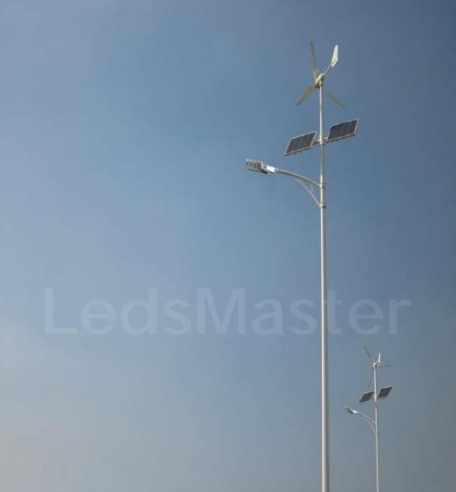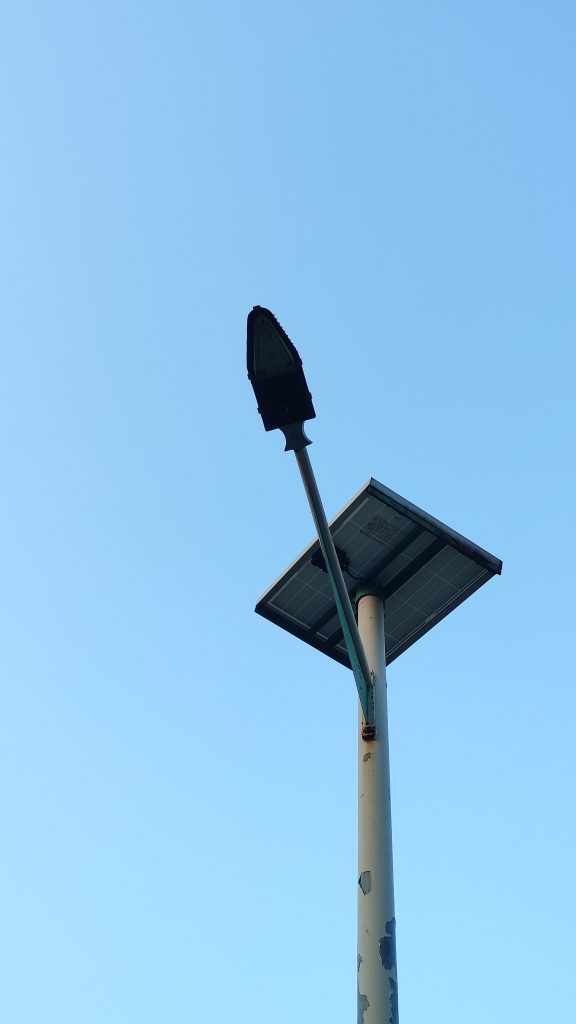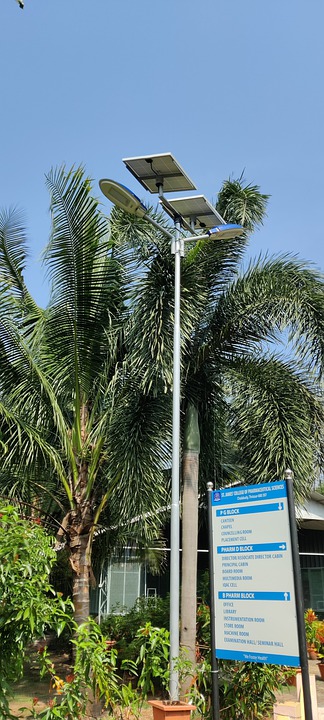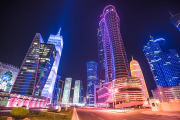Advantages & Disadvantages of Solar Street Lights
1. Introduction
Solar energy refers to the thermal radiation energy of the sun, and its main manifestation is the sun’s rays. Solar energy is inexhaustible, and it is a renewable green energy source, so now energy-saving solar energy equipment is also adopted on the market, such as our common solar water heaters, solar street lights…
As the earth’s resources become increasingly scarce, the investment cost of basic energy is rising, and various safety and pollution hazards are everywhere. As an “inexhaustible and inexhaustible” safe and environmentally friendly new energy getting more and more attention. At the same time, with the development and progress of solar photovoltaic technology, the dual advantages of solar street light products in environmental protection and energy saving, the development of solar street lights in the field of street lighting has become increasingly perfect. However, in addition to its advantages, solar street lights also have certain disadvantages. So what are the advantages and disadvantages of solar street lights? In this article, the author will share the advantages and disadvantages of solar street lights with readers.

2. Advantages
2.1. Cost
Traditional city street lights are much cheaper than solar street lights when purchased, and solar street lights convert light energy into electrical energy to power street lights through solar circuit boards, so the biggest advantage of solar street lights is to make full use of solar energy resources to ease energy tensions , using new energy to solve people’s living needs without reducing the quality of demand.
Solar street lights use solar photovoltaic cells to provide electricity. As a green and environmentally friendly new energy, solar energy is “inexhaustible and inexhaustible”. Making full use of solar energy resources has positive significance for alleviating the shortage of conventional energy. Solar street lights use natural light to reduce the consumption of electric energy; solar street lights are pollution-free and radiation-free, in line with the modern concept of green environmental protection. The operation and maintenance cost of solar street lights is low. The operation of the entire system is automatically controlled, without human intervention, and almost no maintenance costs are incurred.
Traditional lighting street lights may have potential safety hazards due to construction quality, material aging, abnormal power supply and other reasons through electrical energy conversion. The solar street lights do not use alternating current, but also use batteries to absorb solar energy and convert low-voltage direct current into light energy, so there is no potential safety hazard. At present, the production technology of most solar cell modules is sufficient to ensure that the performance does not decline for more than 10 years, and solar cell modules can generate electricity for 25 years or more.
Generally speaking, the cost of solar street lights is lower than that of ordinary incandescent lights or ordinary LED lights, because the purchase price of ordinary solar street lights themselves is relatively low, and most of the time they rely on solar power to generate electricity, so the daily consumption of electricity is also a bit less.

2.2. Installation
The construction of traditional city circuit lights is more complicated. It requires breaking ground, digging land, occupying farmers and other places, which can easily lead to conflicts between the project and the villagers, and it is not easy to construct; solar street lights are much more convenient in construction than city circuit lights. Yes, there is no need to lay wires; the integrated solar street light can choose to dig a hole and bury a new pole like a traditional solar street light, or it can be installed on the existing poles, walls and other supports, which greatly reduces the construction process.
Compared with traditional street lights, solar street lights are much simpler to install. Unlike traditional street lights, solar street lights do not need to lay a large number of lines. They only need to dig holes and bury the embedded parts. All the lines and control parts are on the light pole. Extraordinarily arranged, flexible and convenient installation, it is convenient for users to choose and adjust the capacity of solar street lights according to their own needs. Off-grid solar street lights have the autonomy and flexibility of power supply.
The installation of solar street lights is simple and convenient. There is no need to do a lot of basic engineering such as laying cables like ordinary street lights. It only needs a base to fix it, and all the lines and control parts are placed in the light frame to form a whole.
2.3. Maintenance
The maintenance of traditional city circuit lights and solar street lights is more complicated, and people need to be sent to the local area for maintenance. The maintenance process is more complicated. If the parts are incomplete, it will waste more time. Now many factories are reluctant to go to the local maintenance after installation. The solar street light is controlled by an intelligent controller, which can automatically adjust the brightness of the light according to the natural brightness of the sky in one day and the brightness that people need in various environments. In remote areas far from towns, the cost of maintaining or repairing conventional power generation, transmission, street lights, etc. is high. And solar street lights only require periodic inspections and little maintenance work, and their maintenance costs are much less than conventional power generation systems.
The operation and maintenance cost of solar street lights is low. The operation of the entire system is automatically controlled, without human intervention, and almost no maintenance costs are incurred.
3. Disadvantages
3.1. Cost
The initial investment of solar street lights is large, and the total cost of a solar street light is 3.4 times that of conventional street lights of the same power; the energy conversion efficiency is low, and the conversion efficiency of solar photovoltaic cells is about 15% to 19%. In theory, the conversion efficiency of silicon solar cells can reach 25%, but after the actual installation, the efficiency may be reduced due to the obstruction of surrounding buildings. At present, the area of the solar cell is 110W/㎡, and the area of the 1kW solar cell is about 9 ㎡. It is almost impossible to fix such a large area on the light pole, so it is still not suitable for expressways and main roads; due to the geographical climate The conditions have a great influence. Because the sun is used to provide energy, the local geographic, climatic and weather conditions directly affect the use of street lights. Long cloudy and rainy days will affect the lighting, resulting in the illumination or brightness not meeting the requirements of the national standard, or even no lighting. The price of the battery and the controller is high, and the battery is not durable enough, so it must be replaced regularly. The lifespan is generally only 3 years, and the reliability is low. Due to the influence of external factors such as climate, the reliability is reduced.
The maintenance of solar street lights is difficult, the heat island effect quality of the solar panels cannot be controlled and detected, the life cycle cannot be guaranteed, and it cannot be controlled and managed uniformly. There may be different lighting conditions; the illumination range is narrow. The currently used solar street lights have been inspected by the China Municipal Engineering Association and measured on-site. The general illumination range is 6-7m, and it will be dim beyond 7m, which cannot meet the requirements of expressway, main road needs.
3.2. Capability
The solar irradiance received by the earth’s surface is intermittent and not stable enough, so solar street lights sometimes suffer from power shortages. To improve the conversion rate, more expensive equipment is often required, which virtually increases the engineering cost.
Due to relying on the sun to obtain energy, the local geographical climate and weather conditions directly affect the use of street lighting. Long cloudy and rainy days will affect the lighting, resulting in the illumination or brightness not meeting the requirements of the national standard, and even if the lights are not turned on, due to insufficient light during the day, the lighting time at night is too short.
The conversion efficiency of solar photovoltaic cells is about 15% to 19%. In theory, the conversion efficiency of silicon solar cells can reach 25%. However, after the actual installation, the efficiency may be reduced due to the obstruction of surrounding buildings.
Due to the limitations of natural conditions such as day and night, seasons, geographic latitude and altitude, and the influence of random factors such as sunny, cloudy, cloudy, and rainy, the solar irradiance reaching a certain ground is both intermittent and extremely unstable. , which makes the large-scale application of solar energy more difficult. In order to make solar energy a continuous and stable energy source, and finally become an alternative energy source that can compete with conventional energy sources, the problem of energy storage must be well solved, that is, the solar radiation energy during the sunny day should be stored as much as possible for nighttime or rainy weather. However, energy storage is also one of the weaker links in solar energy utilization.

4. Conclusion
The above advantages and disadvantages of solar street lights are shared here. In general, solar street lights are excellent products for developing and utilizing solar energy. Although it still has some defects, with the advancement of technology, solar street lights will definitely become more and more Well, bring a comfortable and safe life to everyone.
Having said so much, everyone should have a new understanding of solar street lights, so it is very important for us to choose products, and we must start with the local climate and the actual situation of the project itself; LedsMaster Lighting Company has independently developed and produced remote intelligent control terminals and Sales of high pole lights, street lights, magnolia lights, garden lights, lawn lights, large landscape lights, solar lighting devices, wind complementary lighting, landscaping, high voltage power transmission and transformation poles, traffic light poles, urban and road lighting construction, Customized lighting design and installation, welcome to read more articles for details!


